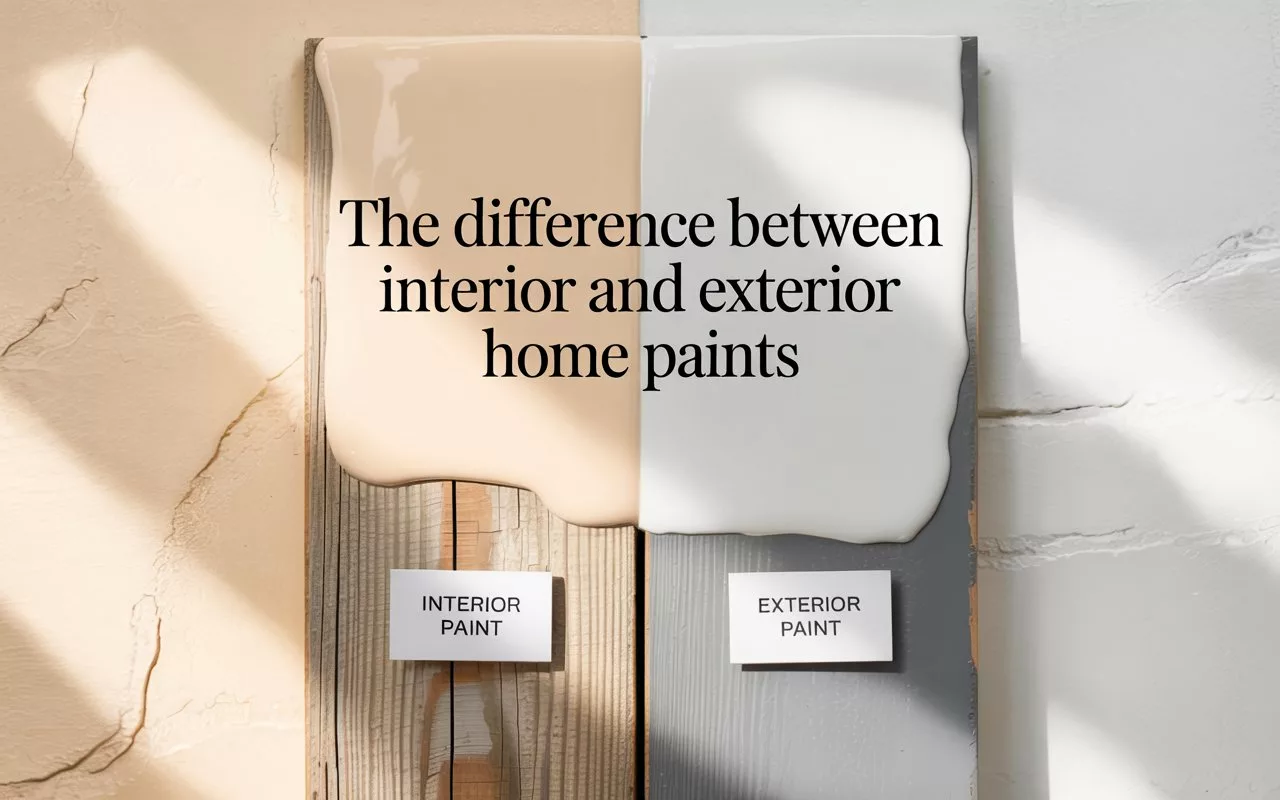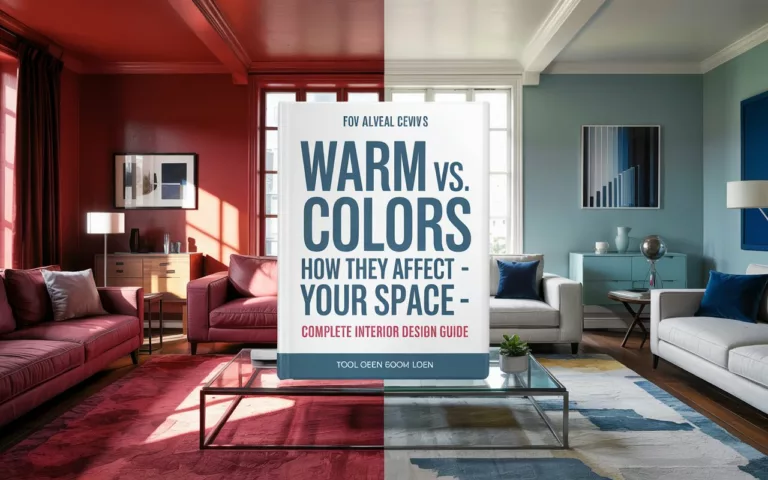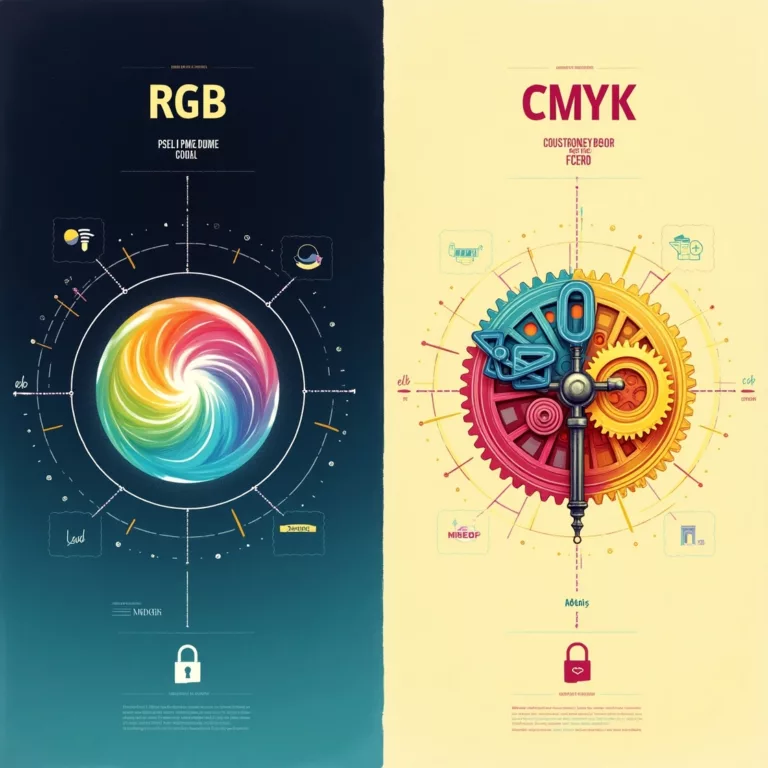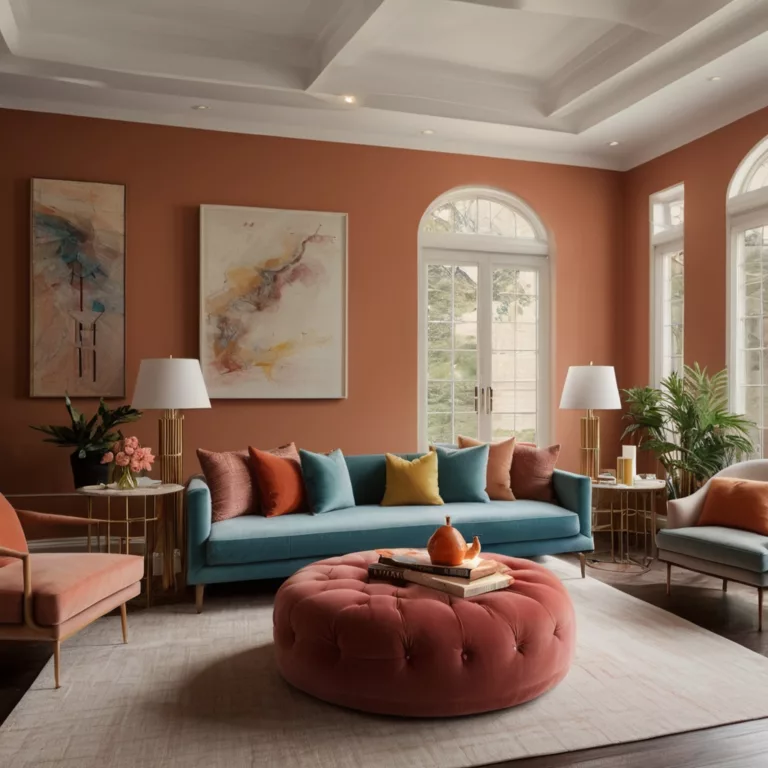The Difference Between Interior and Exterior Home Paints:
Understanding the Fundamental Distinctions in Home Paints
The difference between interior and exterior home paints goes far beyond simple marketing distinctions. These specialized formulations represent years of chemical engineering designed to address entirely different environmental challenges and performance requirements. Whether you’re planning a DIY project or hiring professionals, understanding these differences is crucial for achieving lasting results and protecting your investment. This comprehensive guide explores the science, application techniques, and essential considerations that differentiate these two paint categories.
The Science Behind The Difference Between Interior and Exterior Home Paints
Chemical Composition: The Foundation of Paint Performance
The difference between interior and exterior home paints begins at the molecular level. Both paint types contain four primary components: pigments, binders, solvents, and additives. However, their formulation ratios and specific chemical properties vary significantly:
- Pigments: Exterior paints contain more robust pigments with superior UV resistance and color retention properties. Interior paint pigments prioritize aesthetic qualities and color accuracy.
- Binders: Exterior paint uses flexible acrylic, silicone, or epoxy binders that allow the paint to expand and contract with temperature fluctuations. Interior paints typically use more rigid binders like vinyl or modified alkyds.
- Solvents: Both paint types use water (for latex) or various organic compounds (for oil-based), but exterior paints contain specialized slow-evaporating solvents that allow better adhesion in variable outdoor conditions.
- Additives: This is where the difference between interior and exterior home paints becomes most pronounced. Exterior paints contain fungicides, mildewcides, UV blockers, and water-repellent additives that interior paints typically omit.
Durability Factors: How Environmental Challenges Shape Formulation
The primary mission of exterior paint is to protect buildings from nature’s most destructive forces:
| Environmental Challenge | Exterior Paint Solution | Interior Paint Approach |
|---|---|---|
| UV Radiation | UV-blocking additives and fade-resistant pigments | Minimal UV protection |
| Temperature Fluctuations | Elastomeric properties allowing expansion/contraction | Rigid film formation |
| Moisture Exposure | Hydrophobic additives and mildew resistance | Basic moisture resistance |
| Physical Impact | Higher resin content for durability | Focus on washability rather than impact resistance |
Interior paints face different challenges:
- Indoor air quality concerns
- Human contact and cleaning requirements
- Aesthetic priorities
- Controlled environmental conditions
These different priorities explain why using the wrong paint type can lead to premature failure, poor appearance, and potential health concerns.
Performance Characteristics: The Practical Impact of Formulation Differences
Exterior Paint Performance Attributes
When examining the difference between interior and exterior home paints, these performance characteristics stand out for exterior formulations:
Weather Resistance
Exterior paints create a flexible, breathing barrier that:
- Resists peeling and cracking during freeze-thaw cycles
- Maintains adhesion during temperature extremes (-20°F to 150°F)
- Creates a hydrophobic surface that repels moisture while allowing vapor transmission
Fade Resistance
Premium exterior paints offer:
- Up to 15 years of color retention in harsh sunlight
- Special UV-blocking technology that protects both the paint film and the substrate
- Increased film thickness (typically 4-6 mils when dry) compared to interior paints
Mold and Mildew Resistance
Exterior paints incorporate:
- Powerful fungicides that remain active for years
- Alkaline-resistant formulations that maintain protection even on masonry surfaces
- Self-cleaning properties that reduce organic growth adhesion
Visit Sherwin-Williams Exterior Paint Technology for a deeper dive into advanced exterior paint technology.
Interior Paint Performance Attributes
Interior paints prioritize different performance characteristics:
Low VOC Emissions
Modern interior paints emphasize:
- Zero or ultra-low VOC formulations (often below 5g/L)
- Reduced odor for quick room reoccupation
- Certification from organizations like Greenguard for indoor air quality
Washability and Stain Resistance
Interior paints provide:
- Scuff-resistant surfaces that withstand regular cleaning
- Stain-blocking technology that prevents water spots and everyday stains
- Burnish resistance in high-traffic areas
Application Properties
Interior paints feature:
- Better coverage with fewer coats
- Superior hide (the ability to conceal previous colors)
- Smoother application properties for DIY projects
Surface Preparation Requirements
Techniques: How Usage Differs Between Paint Types
The difference between interior and exterior home paints extends to how surfaces must be prepared:
Exterior Surface Preparation
Exterior surfaces require more intensive preparation:
- Pressure washing to remove contaminants
- Scraping and sanding of failing previous coatings
- Treatment of mold or mildew with specialized solutions
- Caulking of gaps and joints with exterior-grade sealants
- Primer application matched to specific substrate conditions
Our partners at Benjamin Moore offer detailed exterior preparation guides for various surfaces.
Interior Surface Preparation
Interior preparation focuses on:
- Dust and debris removal
- Filling of nail holes and minor imperfections
- Light sanding of glossy surfaces
- Application of specialty primers for stain blocking
- Careful masking of trim and adjacent surfaces
Application Tools and Techniques
The difference between interior and exterior home paints influences the tools and techniques used:
Exterior Application Methods
- Airless sprayers (for large surfaces and textured exteriors)
- High-capacity rollers with 1/2″ to 1″ nap for textured surfaces
- Extension poles and ladder stabilizers for safety
- Application in temperature ranges of 50-85°F with humidity below 85%
Interior Application Methods
- Premium rollers with 3/8″ nap for smooth walls
- Specialized mini-rollers for trim and cabinetry
- Brush application for detailed cutting-in
- Application in controlled environments with minimal air movement
Finish Options: Sheen Differences and Practical Applications
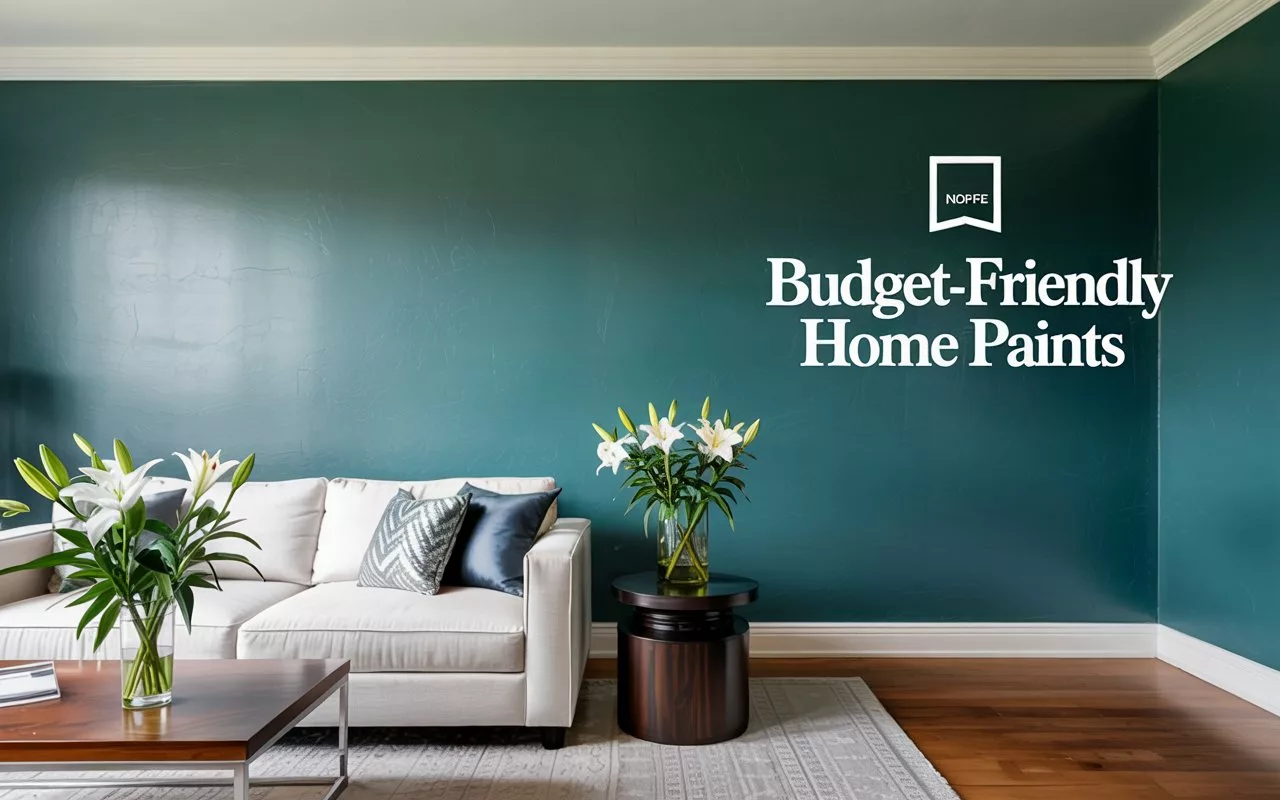
Exterior Paint Finishes
Exterior sheens have specific durability characteristics:
Flat/Matte (0-10% gloss)
- Best for hiding surface imperfections
- Appropriate for siding with weathered textures
- Requires more frequent repainting (5-7 years)
Satin/Eggshell (15-25% gloss)
- Most popular exterior finish
- Balances dirt resistance with modest sheen
- Ideal for most siding materials
Semi-Gloss/Gloss (40-90% gloss)
- Maximum durability and moisture resistance
- Recommended for trim, doors, and architectural details
- Shows surface imperfections more readily
Interior Paint Finishes
Interior finishes prioritize different characteristics:
Flat/Matte (0-5% gloss)
- Maximum hiding of wall imperfections
- Ideal for ceilings and low-traffic areas
- Limited washability
Eggshell (10-25% gloss)
- Most popular interior wall finish
- Good balance of washability and low sheen
- Suitable for living rooms, bedrooms, and dining areas
Satin (25-35% gloss)
- Enhanced durability for high-traffic areas
- Moderate shine that highlights architectural details
- Appropriate for kitchens, bathrooms, and hallways
Semi-Gloss/Gloss (40-90% gloss)
- Maximum scrub resistance and moisture protection
- Highlights trim, doors, and architectural features
- Shows surface imperfections and application flaws
For a deeper understanding of interior finish selection, visit our resource on interior paint finishes and room-specific recommendations.
Cost Considerations: Investing Wisely in Paint Products
Price Point Differences
The difference between interior and exterior home paints is reflected in their pricing:
Exterior Paint Pricing Structure
- Economy ($25-35 per gallon): Basic protection with 3-5 year durability
- Mid-range ($40-55 per gallon): Enhanced weather resistance with 7-10 year durability
- Premium ($65-90+ per gallon): Maximum protection with 15-25 year warranties
Interior Paint Pricing Structure
- Economy ($20-30 per gallon): Basic coverage with limited washability
- Mid-range ($35-50 per gallon): Good hide with moderate scrub resistance
- Premium ($55-75+ per gallon): One-coat coverage with superior washability
Coverage and Quantity Calculations
When calculating paint requirements, remember:
- Exterior paints typically cover 250-350 sq ft per gallon (depending on surface texture)
- Interior paints typically cover 350-400 sq ft per gallon (on smooth surfaces)
- Both require additional quantity for second coats (usually 15-25% more)
Use our Paint Calculator to determine exact quantities for your project.
Environmental Impact: Sustainability Considerations
VOC Content and Emissions
The difference between interior and exterior home paints includes their environmental footprint:
Exterior Paint Environmental Considerations
- Higher average VOC content (50-150 g/L for latex)
- Longer off-gassing period (typically 2-4 weeks)
- Specialized disposal requirements for leftover product
Interior Paint Environmental Considerations
- Ultra-low VOC options (0-50 g/L)
- Rapid off-gassing (24-72 hours for reoccupation)
- Growing availability of bio-based ingredients
For environmentally conscious consumers, companies like ECOS Paints offer specialized low-impact formulations.
Lifecycle Assessment
The environmental impact extends beyond application:
- Exterior paints typically last 7-15 years before requiring replacement
- Interior paints often remain functional for 5-10 years
- Both paint types are difficult to recycle once applied
Common Problems: Troubleshooting When Using the Wrong Paint Type
Using Interior Paint Outdoors
Using interior paint in exterior applications leads to predictable failures:
- Color Fading: Interior pigments break down within months of UV exposure
- Film Failure: Cracking and peeling occur as paint cannot expand/contract
- Mold Growth: Lack of mildewcides allows rapid biological growth
- Chalking: Surface deterioration creates a powdery residue
Using Exterior Paint Indoors
Using exterior paint indoors creates different issues:
- Prolonged Odor: Slower-drying solvents create lingering smells
- VOC Concerns: Higher VOC levels may exceed indoor air quality recommendations
- Different Appearance: Exterior sheens appear different under indoor lighting
- Unnecessary Cost: Premium weather-resistant additives waste money indoors
Professional Selection Guide: Choosing the Right Paint for Every Project
Interior Paint Selection Factors
When selecting interior paint, prioritize:
- Room Function: High-traffic areas need more durable finishes
- Lighting Conditions: Natural vs. artificial lighting affects color perception
- Surface Type: Drywall, plaster, wood, and metal require different formulations
- Occupant Sensitivity: Consider low-VOC options for sensitive individuals
Exterior Paint Selection Factors
For exterior applications, consider:
- Climate Conditions: Humid, arid, coastal, and extreme temperature regions require specialized formulations
- Substrate Material: Wood, vinyl, fiber cement, stucco, and masonry each need compatible paints
- Architectural Style: Historic homes often require specialized coatings
- Warranty Requirements: HOA and insurance considerations may dictate minimum quality levels
Special Situations: Addressing Unique Painting Challenges
High-Moisture Areas
The difference between interior and exterior home paints becomes critical in moisture-prone spaces:
Bathroom and Kitchen Paints
These specialized interior formulations combine:
- Mildew resistance comparable to exterior paints
- Moisture vapor transmission properties
- Steam resistance for shower enclosures
Pool Deck and Patio Paints
These specialized exterior formulations provide:
- Slip resistance for wet surfaces
- Chlorine and chemical resistance
- Extreme UV protection
Extreme Temperature Environments
Certain locations require specialized coatings:
Hot Climate Considerations
- Heat-reflective pigments reduce surface temperatures
- Enhanced flexibility prevents cracking in extreme heat
- Special additives prevent premature curing during application
Cold Climate Requirements
- Low-temperature application capabilities (down to 35°F)
- Enhanced adhesion during freeze-thaw cycles
- Resistance to snow and ice removal chemicals
The Future of Paint Technology: Innovations Blurring Traditional Boundaries
Hybrid Formulations
The traditional difference between interior and exterior home paints is evolving with:
- Interior/exterior hybrid paints for semi-protected spaces like garages and sunrooms
- Self-priming formulations that eliminate separate priming steps
- All-surface products that adhere to multiple substrates
Smart Paint Technologies
Emerging paint technologies include:
- Thermochromic paints that change color with temperature
- Air-purifying formulations that actively remove VOCs and pollutants
- Self-cleaning exterior paints that use photocatalytic reactions
- Insulating paints that reduce thermal transfer
Learn more about these innovations from the Coatings Research Institute.
DIY vs. Professional Application: Making the Right Choice
When to DIY
Consider DIY painting when:
- The project involves standard interior walls in good condition
- You have basic painting experience and proper tools
- The surface area is manageable without specialized equipment
- Time constraints are flexible
When to Hire Professionals
Professional painters are recommended when:
- The project involves exterior surfaces above one story
- Significant surface preparation or repair is required
- Special finishes or techniques are desired
- Historic or specialized materials are involved
Find certified painting professionals through the Painting and Decorating Contractors of America.
Conclusion: The Importance of Understanding Paint Differences
The difference between interior and exterior home paints represents more than mere marketing distinctions—it reflects fundamental engineering designed to address different environmental challenges and performance requirements. By understanding these differences, homeowners can:
- Make informed purchasing decisions that balance cost and performance
- Avoid premature product failure and associated repair costs
- Create healthier indoor environments with appropriate paint selection
- Achieve professional-quality results whether DIY or hiring professionals
Remember that paint is both your home’s first line of defense against the elements and its most visible aesthetic statement. Selecting the right paint for each application ensures both beauty and protection for years to come.
Resources and Further Reading
- The Science of Paint Formulation
- American Coatings Association
- Interior Paint Selection Guide
- Exterior Paint Durability Factors
- How to Properly Store Leftover Paint
- Understanding Paint Warranties
This article is regularly updated to reflect the latest developments in paint technology. Last updated: April 2025.
This comprehensive guide to the differences between interior and exterior home paints was developed by professional painting contractors and chemical engineers with decades of experience in residential and commercial applications.
Art11deco

